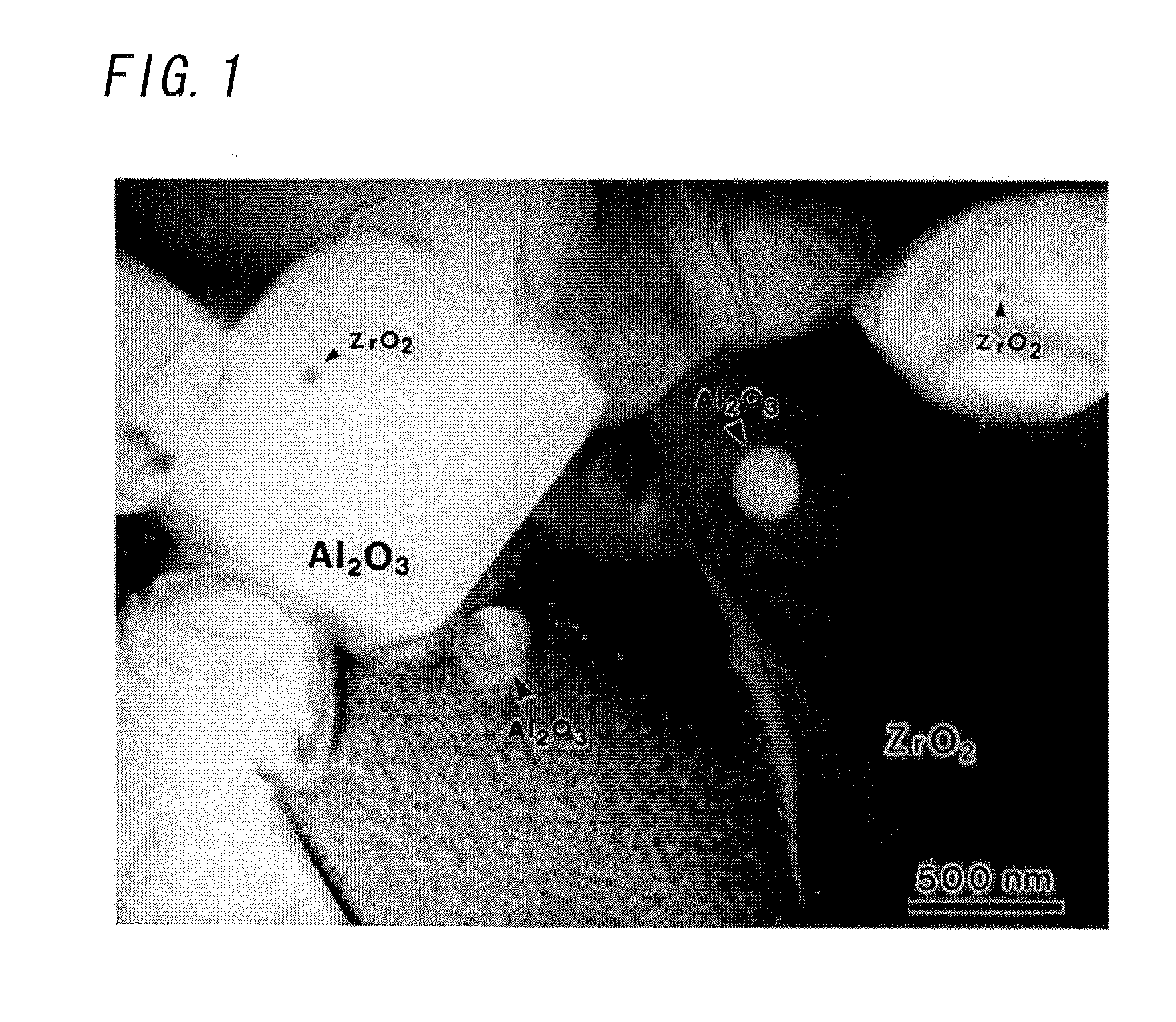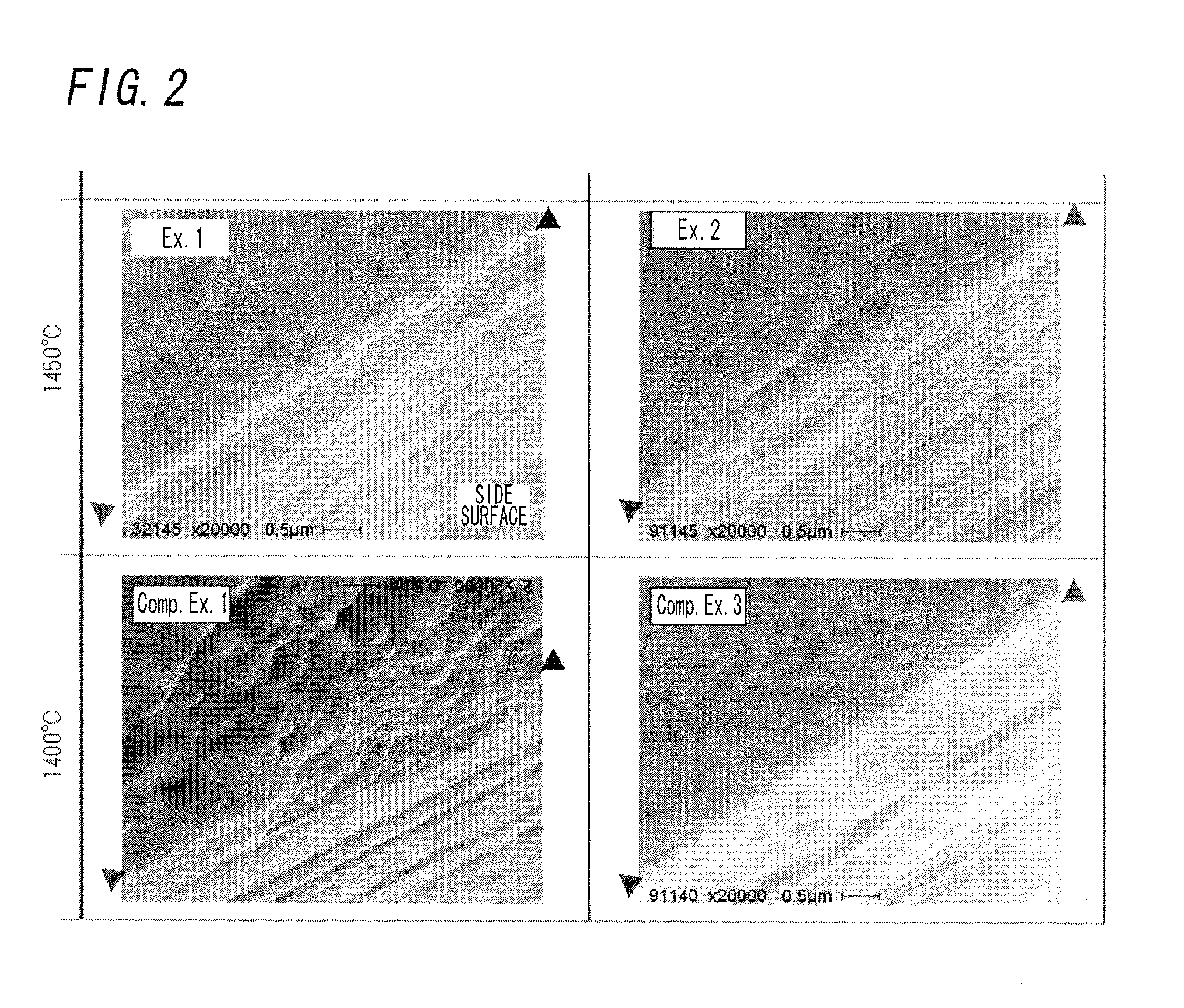Method for producing zirconia-alumina composite ceramic material, zirconia-alumina composite granulated powder, and zirconia beads
a technology of composite ceramics and zirconia, which is applied in the direction of natural mineral layered products, synthetic resin layered products, metal layered products, etc., can solve the problems of deterioration in the balance between toughness and mechanical, low sintering temperature for complete sintering, and decline of zirconia particles incorporated in an alumina particle, etc., to achieve strong and toughness, and excellent wear resistance and hardness
- Summary
- Abstract
- Description
- Claims
- Application Information
AI Technical Summary
Benefits of technology
Problems solved by technology
Method used
Image
Examples
examples
[0078]The present invention is described more specifically by the examples provided below.
example 6
[0089]A tetragonal zirconia powder having a specific surface area of 15 m2g−1 and containing 12 mol % coria and 0.04 mol % titania as stabilizers was used as the first powder for providing the first phase formed of zirconia particles. The tetragonal zirconia powder content was 100 volume %, and the average particle size was in the range from 0.3 to 0.5 μm.
[0090]A mixture of an α-alumina powder having an average particle size of 0.1 μm and a spherical γ-alumina powder having a specific surface area of 55 m2g−1 and an average particle size of 0.03 atm and produced by a vapor-phase method (laser ablation) was used as the second powder for providing the second phase formed of alumina particles. The α-alumina powder:γ-alumina powder proportion in the second powder was 70:30 as the mass ratio. Thus, the content of the γ-alumina powder with reference to the α-alumina powder was 42.9 mass %. The average particle size of the second powder was in the range from 0.1 to 0.3 μm.
[0091]This first ...
PUM
| Property | Measurement | Unit |
|---|---|---|
| Temperature | aaaaa | aaaaa |
| Length | aaaaa | aaaaa |
| Length | aaaaa | aaaaa |
Abstract
Description
Claims
Application Information
 Login to View More
Login to View More - R&D
- Intellectual Property
- Life Sciences
- Materials
- Tech Scout
- Unparalleled Data Quality
- Higher Quality Content
- 60% Fewer Hallucinations
Browse by: Latest US Patents, China's latest patents, Technical Efficacy Thesaurus, Application Domain, Technology Topic, Popular Technical Reports.
© 2025 PatSnap. All rights reserved.Legal|Privacy policy|Modern Slavery Act Transparency Statement|Sitemap|About US| Contact US: help@patsnap.com



